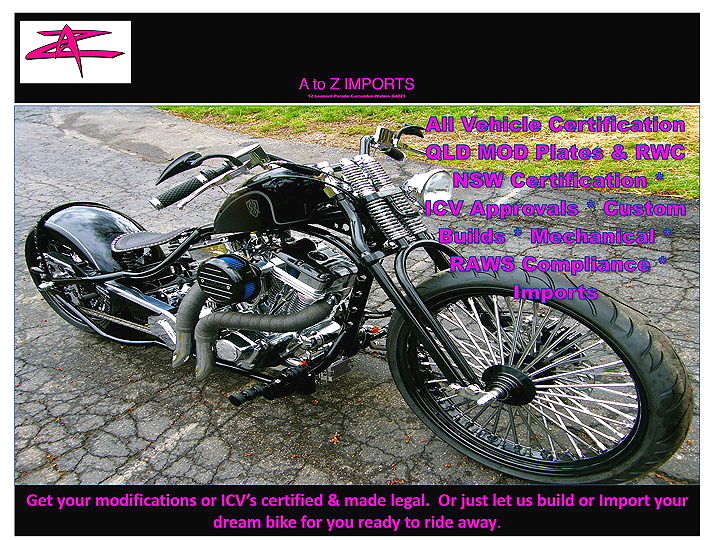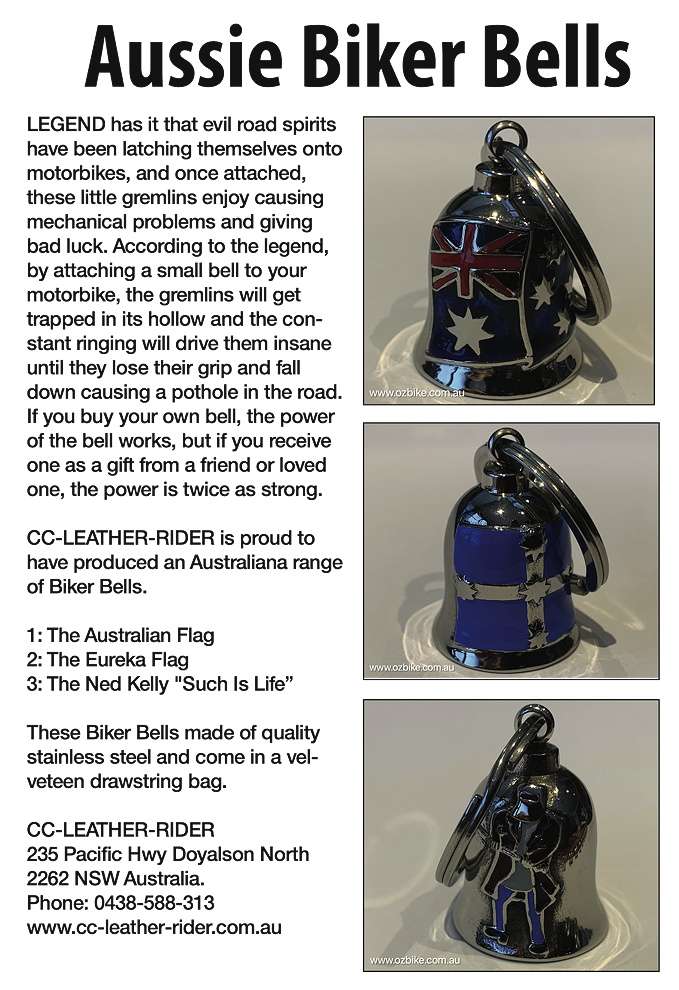MV Agusta vs Manx Norton
Road Tales By Kelly Ashton

I’VE GOT a racing buddy named Rod; he is custodian of his late father’s impressive collection of classic bikes. One of those bikes is a lusty MV Agusta. This is no ordinary MV — if there’s such a thing — but a Magni MV, one of the MV road bikes refurbished by the great Arturo Magni, former race engineer. Not just any old Magni MV either, but a special 866 cc version. Rod had entered the bike, plus a few ordinary old cammy Nortons, in the Seaforth Grand Prix. The only trouble was that the magnificent Magni had no clutch; it was totally burned out.
Now, Seaforth is a fairly ritzy suburb of Sydney. It doesn’t have a racetrack and the Seaforth Grand Prix wasn’t even a real race, but a parade of just about every type of competition machine imaginable. Hundreds of machines line up in the main streets of Seaforth, from single-gear go-karts to massive great McLaren sports cars, from diminutive trials bikes to big Kwakka Superbikes from Team Kawasaki Australia. Throw in some vintage speedcars and off-road dune buggies, and you have a wild old mix of vehicles. And then, after a few hours of show, it’s time for go. Seaforth is the gateway to the Northern Beaches, and the entrance gate is an archaic opening bridge at The Spit. For the parade, the police would close the roads, hold the bridge open for a much longer period than the usual infuriating time for the frustrated motorists. Three laps through some of the best real estate in the world might not sound like much, but it was a pretty unique experience.
But things weren’t looking real good for Rod’s MV outing. Frantically searching through every available clutch plate failed to find anything remotely compatible, and last hopes were dashed on the Thursday afternoon, when one of Australia’s best known Italian bike specialists arrived back from Italy completely plateless.



As Rod had already asked me to ride the 500 cc short-stroke Manx for him, I felt it imperative we get the MV going (in case he put in an official rider change for the Manx) so drastic action was called for. Nobody except me believed my bold plan would work, but I knew if we cut friction discs from gasket paper, Araldited them to friction plates and treated the clutch lever with a bit of respect, it would make the three laps. It was shocked looks all around when the big DOHC Four fired up and traveled under its own steam; all was ready for Saturday’s action.
It was a weird, piecemeal snake of racing machines threading its way down through the leafy suburb and its tight roundabouts. The sensually curved and upswept open megaphones on Rod’s MV made an earsplitting noise as he blipped the throttle and gingerly fed the clutch in. The Manx sounded and felt great, and Rod’s other bike, a pre-war works Norton replica, was being ridden by another member of the team. We all looked the part, with our black leathers and pudding basin helmets, but were sandwiched between some off-road buggies behind us, and a gaggle of go-karts in front.
The motley procession dawdled down Battle Boulevarde to the uplifted Spit Bridge. Various machines had various problems with the walking pace; cranky engines spluttered and coughed; machines which needed only marginal brakes made for some interesting manoeuvers down the steep hill, but the weirdest event was to watch the four clutchless Sprint Karts. Their drivers would have to run beside the Kart with the back wheels in the air, until they dropped the backs and jumped aboard. This and other spectacles were witnessed by appreciative locals who lined the streets and cheered… like the one hairy eccentric who stood there in a vintage leather driving coat and leather flying helmet, with Stadium Mk IX goggles over his eyes and wineglass raised in a perpetual toast.
At the bottom of Battle Boulevarde, a big, ugly police sergeant was directing the race vehicles to turn left up Manly Road, a steep, three-lane roadway which headed straight up for about half a mile before turning sharp left under a bridge. In a flash, the four sprint karts zipped away up the hill; the Manx cleared its throat, got on the cam and shot off in pursuit. Shock number one came when, right in the middle of a flat change from third to top, all four karts, still clustered together like a swarm of insects, simultaneously ran out of puff at peak revs. Now, I can’t honestly say what that feels like from the driver’s seat of a kart, but from the saddle of a Manx Norton, the karts appeared to have stopped dead in front of the front tyre. A sudden swerve was called for, and I prayed to whichever saint was responsible for guiding irresponsible people through difficult situations (I should know that saint’s name by now), that nobody else was in the process of passing me with the same speed differential I had over the karts.
Now, if you’ve ever heard an MV on four open megaphones, you’ll know it’s loud — very, very loud. Over the glorious drone of the Manx, all the way up the hill and slightly behind me to the right, was the overpowering wail of the big MV. Just before my kart-avoiding swerve, I’d definitely detected the rising crescendo of the MV being given ‘what for’ by Rod. Fortunately, Rod and I had raced together many times, and he had already moved over to give me room; but he hadn’t backed off the gas.
Even though I was in the process of experiencing a wonderful thing — it’s not often you get the chance to hit redline in top gear whilst riding a Manx on a public road — the same piece of roadway I’d been steering the Commando across for the Monday morning peak hour — I also got to experience the same bitter feelings a thousand privateer Norton riders must have suffered during the 500 cc motorcycles Grand Prix of the 1950s and 1960s — being totally demoralised when a MV flashes past some 20 mph faster!
The main difference was that if the luckless privateer of the ’50s and ’60s would never had believed for one minute that the clutch of the MV which just flashed past was made of gasket paper and glue. The funny thing was, the clutch never slipped once, and when the new plates finally arrived, it was decided to test the paper plates. With a reasonable crowd looking on from the front gatepost at Rod’s farm down near Magellan, Rod’s brother Trev gave the MV a big ‘what for’ snaking the back wheel away from a very rapid standing start. It made the first flat-out start, but not the second.
Like I said, nobody believed me when I boldly claimed that gasket paper would work as a friction material, but it did, for a while at least.
Road Tales By Kelly Ashton


